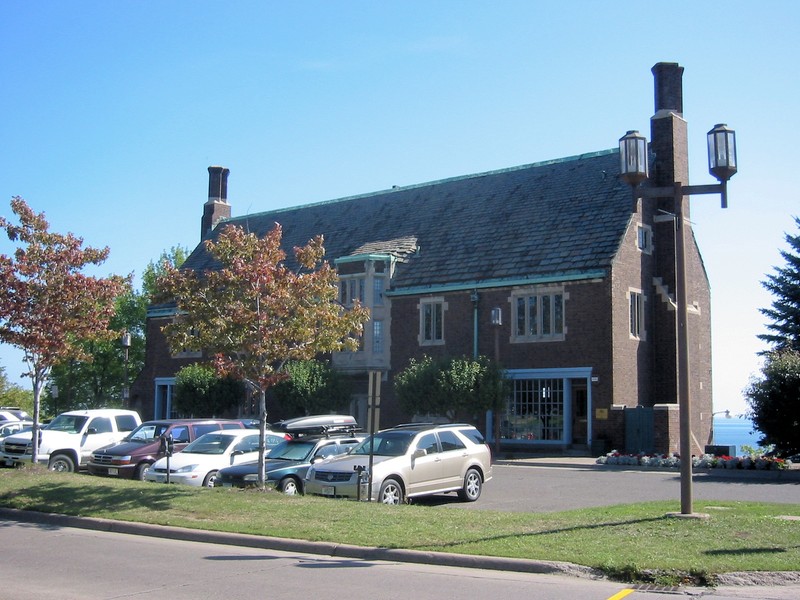Hartley Building
Introduction
Text-to-speech Audio
Images
Hartley Building in Duluth

Backstory and Context
Text-to-speech Audio
The Hartley Building embodies the Tudor Revival style as designed by nationally prominent architect Bertram G. Goodhue. From the 1880s to around World War I, Minnesota agriculture, lumber, and iron ore mining, along with the concurrent growth in railway and seaport transportation, helped Duluth expand greatly. Indeed, during the first ten months of 1913, Duluth led the nation in commercial construction -- the Hartley Building arrived during that construction boom in 1914.
The building's namesake and Duluth Street Railway Company General Manager, Guilford Hartley, also gained substantial wealth by conducting iron ore explorations and investing in numerous enterprises tied to agriculture, timber, mining, and newspapers. He decided to build his office building away from the commercial center near the exclusive Kitchi Gammi Club (for which he was a member); both buildings overlooked Lake Superior. Occupants sharing the building with Hartley's business interests included attorneys, realtors, mining and exploration companies, and an office of Dupont Company. Lastly, acclaimed author Margaret Culkin Banning maintained an office and summer apartment in the Hartley Building for several years.
The Hartley Building is one of four Duluth structures designed by the prominent Boston firm of Ralph A. Cram and Bertram G. Goodhue between 1912 and 1915. Goodhue headed the firm's New York office; his name and New York address appear on the building's blueprints. He also designed the Kitchi Gammi Club (where he likely developed a relationship with Hartley) and St. Paul's Episcopal Church in 1912, and then the Cavour Hartley house in 1915. Goodhue successfully designed the Hartley Building to stand alone with Lake Superior in the background despite the crowded street for which it stood.
Hartley, his wife Caroline, and his family lived in the now-razed twenty-one-room Hartley Mansion, which stood as a landmark for decades from the late nineteenth century to the mid-twentieth century. As well, today's 640-acre Woodland's Hartley Park and Hartley Nature Center lie on the site that once supported Hartley's Allendale Farms, which once produced a variety of vegetables. The mansion, park, and the Hartley Building collectively speak to Hartley's wealth and influence in Duluth and the surrounding region. After Hartley died in 1922, his estate's value amounted to $3 million (more than $40 million in 2020 dollars). He bequeathed the office building to his family, who continue to maintain a portion of the building. In 2009, renovations to the building included replacing the original slate roof with new slates from the same quarry used in 1914.
Sources
Dierckins, Tony and Maryanne C. Norton. "Hartley House." Zenith City Press. zenithcity.com. Accessed August 23, 2020. http://zenithcity.com/archive/lost-architecture/hartley-house/.
Nelson, Nancy S and Tony Dierckins. "Guilford G. Hartley." Zenith City Press. zenithcity.com. Access August 23, 2020. http://zenithcity.com/archive/people-biography/guilford-g-hartley/.
Norton, Maryanne C. "Nomination Form: Hartley Building." National Register of Historic Places. nps.gov. December 15, 1989. https://npgallery.nps.gov/GetAsset/55841df6-31e5-4053-a763-d317664f7eba.
Sommer, Lawrence. "Hartley Office Buildings." Society of Architectural Historians by the University of Virginia Press. sah-archipedia.org. Accessed August 23, 2020. https://sah-archipedia.org/buildings/MN-01-137-0026
By Elkman - Own work, CC BY-SA 3.0, https://commons.wikimedia.org/w/index.php?curid=4828957
